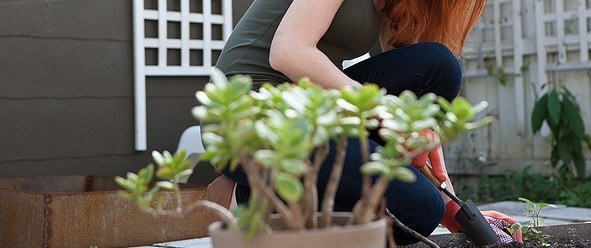How Do I Start A Vegetable Garden

If you want the freshest produce possible, consider planting your own home garden—after all, you can't get any closer to your kitchen table than your own backyard. Growing your own vegetables is thrifty, too. According to the National Gardening Association, the average family with a garden spends $70 on their crops—but they grow an estimated $600 worth of veggies!
10 Steps to Starting a Vegetable Garden
To get started, here are 10 steps recommended by the National Gardening Association.
1. Choose the right location
Choose a location for the garden that has plenty of sun, ample space and close proximity to your hose or water source. Find a level area to help prevent erosion.
2. Select your veggies
Decide what produce to include based on your climate, space, tastes and level of expertise. Newcomers may want to consider some of the easier crops to grow, like carrots, beans, cucumbers, peppers and lettuce.
3. Prepare the soil
Mix compost and natural fertilizers into your garden to condition the soil for your plants. Garden-supply stores can test the acidity of your soil and recommend supplements, or you can simply purchase specially made soil in bulk.
4. Check planting dates
Growing conditions and ripening cycles are different depending on the plant and the season, so you should not sow all the seeds at the same time. Planting dates can be found on seed packets. Review the ideal conditions for each veggie you want to plant before creating a gardening schedule.
5. Plant the seeds
Place your seeds or plants into the soil, following the depth and spacing directions carefully.
6. Add water
Gently spray the garden with water to keep the soil evenly moist throughout the growing season. Purchase a spray nozzle for your hose so you can create a gentle rain-like mist for your garden.
7. Keep the weeds out
Mulching is the most effective way to prevent weeds. Add a 2- to 4-inch-thick layer of organic mulch to your garden to keep the weeds from overtaking your crops. If weeds do appear in the garden, grab them low on their stems and yank sharply, making sure to extract the entire root.
8. Give your plants room to grow
Check the spacing guide on the seed packets and be sure to remove crowded seedlings right away.
9. Fertilize as needed
Lightly till the soil by hand and add fertilizer to keep it rich. You can purchase prepared garden fertilizer or make your own from items like Epsom salt, eggshells, fish tank water and kitchen compost.
10. Reap what you sow
Harvest vegetables when they're young and tender—but only pick them when you plan to use them. Pull root crops as soon as they reach edible size. Collect leaf crops by cutting them to within 2 inches of the ground. Finally, enjoy your harvest!
Did you know that there is a homeowners insurance policy that covers structures that are not attached to your home? Learn more about the different types of homeowners insurance.
Related articles
Benefits of Growing Your Own Food
Tips to Help Improve Soil Fertility
How to Grow Vegetables at Home
Backyard Pool Landscaping Ideas
How Do I Start A Vegetable Garden
Source: https://blog.nationwide.com/tips-for-planting-garden/
Posted by: bowlinbouthad.blogspot.com

0 Response to "How Do I Start A Vegetable Garden"
Post a Comment